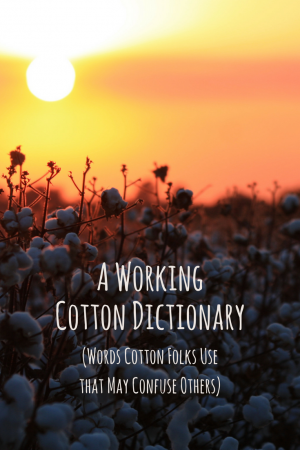 aka Vocabulary the Way I’ve Heard Cotton Farmers & Other Experts Use It & How It Can Be Misunderstood
aka Vocabulary the Way I’ve Heard Cotton Farmers & Other Experts Use It & How It Can Be Misunderstood
If the title and subhead don’t point out this is not an academic endeavor, then let me say it outright. THIS IS NO ACADEMIC DICTIONARY ON COTTON. This is just a simple compilation of words that we use in cotton that may make other people not in the industry shrug their shoulders and say huh? Would appreciate additions, clarifications and questions all!
Bollbuster
- What it isn’t — This was the most fun to use when I was in New York in my awesome Italian community. Depending on the accent, you could easily make it sound like ballbuster which was used a good bit of the time to refer to someone giving a guy a real hard time.
- What it is –There are crop protection products that you can use to help get the bolls on the plant that are designed to help the boll drydown and open more quickly. A real cool snap of weather can have a similar impact on a crop that has bolls drying down. There is a single harvest aid product that has this name but the reality is the slang use is the way I have always heard it.
Burr (pronouced brrrr)
- What it isn’t — Nothing to do with being really cold and having an audible release of that freezing temperature.
- What it is — The part of the plant that holds the cotton fiber on the plant. Learn more about it by watching this video.
Canopy
- What it isn’t –It is not the sort of tent you put up so you can relax outside for a few beers.
- What it is — It is the shading of the dirt between plants when the plants grow big enough to shade out the dirt underneath them. This is really important because that cuts the sunlight off from weeds & grasses that may want to grow…. of course if the weeds have already gotten above the crop, then they will get lots of photosynthetic energy and will keep growing.
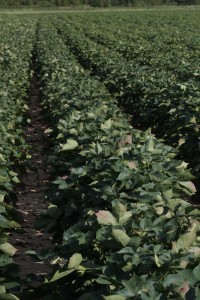
Cut-out
- What it isn’t — I know lots of you think scissors and coupons or paper dolls with the word cut-out, that’s rarely the image I have of cotton farmers though. And if you get caught cutting up in school you are in trouble. Neither of those apply.
- What it is — In cotton, cut-out is a growth stage in the crop. And it really refers to what happens when the crop stops putting on new leaves, branches, bolls, etc. Because cotton varieties can be either determinate or indeterminate as well as range in maturities, cut-out can vary. But when your crop cuts out, you know that all the yield potential you have is already in the field. Farmers don’t want the crop to cut out until they have a good boll load, but mid season stress, particularly drought can lead to premature cut-out with small plants and very few bolls.
Fair to middlin’
- What it isn’t — Just a saying on how your day is going.
- What it is — Fair to middling was part of the grading system before it became a numerical system. The word based system included a spectrum including poor, fair, middling, good and excellent meaning
Fallout
- What it isn’t — A laughing fit that is so hard you can’t stand up!
- What it is — At harvest when cotton lint gets blown off the plant or otherwise comes off the plant. It results in farmers getting fewer pounds per acre.
Fruit
- What it isn’t — Cotton fruit is not something to eat — no apples or bananas here.
- What it is — The term fruit is used to talk about all the things that can provide yield. In its early stages its squares, then blooms, young bolls, etc. We talk about the fruiting structure of the plant because that helps a person understand yield potential and squares, blooms, bolls all matter when you are thinking yield potential!
Gin
- What it isn’t — A kind of alcohol that you serve with tonic & a twist of lemon!
- What it is — A facility that separates the seed from the lint so we can turn the lint into thread & fabric as well as use seed for oil & livestock feed. You can see how a gin works in this post.
High Cotton (aka Tall Cotton in some areas)
- What it isn’t — Not just the lyrics of an Alabama song.
- What it is — A saying that speaks to a really good part of life. I even wrote a whole post on this one! High Cotton blog post
Layby
- What it isn’t — this term makes you think of a mom taking a nap alongside a newborn baby… Please do not think cotton farmers are in the habit of taking a nap between the rows if you hear this term.
- What it is — Instead, this is talking about the timing of the last weed control activity. Farmers have to keep an eye on weeds until the crop canopies over the rows. (see above for detail). At this time cotton farmers can take a bit of break on weed control which is great cause they have lots of other this to think about with the crop (insects, fruit retention, disease, etc)
Mike/Mic
- What it isn’t — Not a guy who goes by the common nickname for folks named Michael.
- What it is — A measure of fiber quality that is largely related to maturity of the fiber. My favorite way of explaining mic (short for micronaire) is to visualize cotton lint as an artery or vein because cotton puts on an external cylinder wall with very fine walls. As the fiber matures, the walls strengthen — kind of like really high cholesterol levels can do to our circulatory system. The property is measured by having a known force of air pressed over the lint. Resistance is measured so immature fiber will collapse and provide the most resistance, whereas air will pass over perfectly round ones. Mic is important as textile manufacturers look at dyeing and weaving.
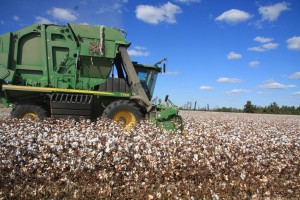 Picker
Picker
- What it isn’t — Guitarists rock my world routinely and I know a couple of cotton farmers who may have musical streaks, but pickers aren’t people in the US any more except in rare research cases where people harvest individual bolls, plants, etc.
- What it is — Enormous pieces of highly complex machinery now harvest cotton crops in the US, Australia and Brazil. Pickers pull lint off the cotton plant and prep it for storage or may even take care of creating the on-board module. There are some photos and posts on the Cotton 101 page.
Square
- What it isn’t — I know that there was a time when a person would be called square, much like a nerd. Farmers and the plants they grow are rockin’, no way they could be mistaken for square. And a pinhead-square would have to be a lowblow!
- What it is — When the plant goes into fruiting mode (starts putting on blooms/flowers), the buds are very small and some folks think that the earliest part of the bud looks squared a bit cause there are generally four sides. Because the square is so small, it can be especially vulnerable to damage by insects so scouts tend to check them to make sure nothing is going to get in the way. Pinhead by the way refers to the size of the square/bud!
Stringout
- What it isn’t — A person who’s been doing drugs is called strungout, this has nothing to do with pharmaceuticals but it can be really depressing.
- What it is — As cotton matures and bolls open, occasionally it rains, gets windy, etc and the the lint begins to separate from the plant and can ultimately fallout leading to a loss of yield.
Stripper
- What it isn’t — A scantilly clad woman dancing with a pole.
- What it is — A piece of harvesting equipment that is sometimes used in the High Plains of Texas. Unlike pickers, strippers pull a good bit of the plant matter into the machine when harvesting. The machine is not as complex and consequently not as expensive, but the tradeoff is found in fiber quality quite often as extra cleaning at the gin can result in reduced fiber quality.
Turnout
- What it isn’t — the folks who come for a party, a misheard lyric from DJ Snake & Lil John (Turn Down for What)
- What it is — A ratio of seed to lint that comes from the gin. Since lint is the piece that offers the greatest profit potential, farmers like to get a higher percentage of lint than seed.
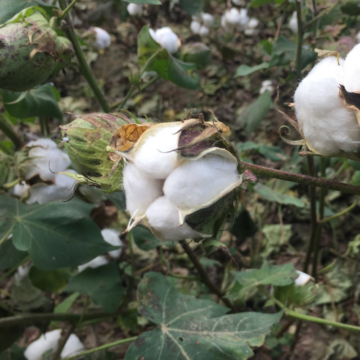
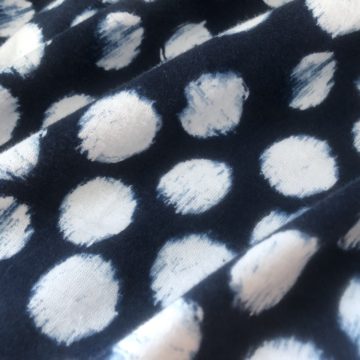

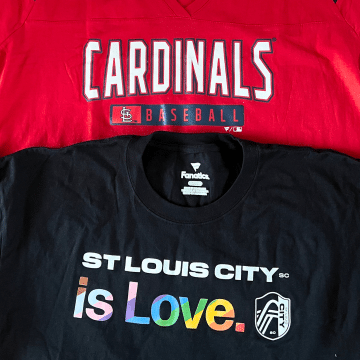

Lol- love this JP. When I first moved over the SJV to teach ag, I was totally clueless about cotton because it wasn’t grown anywhere near where I grew up. I had to coach the cotton judging team and I was wondering WTH all those crazy terms meant. It was a huge learning curve!
PLEASE let me know what all I’m missing! I’ve worked on this slowly for a month trying to get the big ones as I heard them but since I’ve worked in cotton for decades, it takes a bit for me to realize how goofy I can sound, luckily my non-ag family is willing to be a grounding force for me! LOL
Cotton strippers?(sounds racy) What about Mike? ( whoever he is)
Those came to mind tonight! Gotta get them added in…. pickers but not grinners too!
My favorite is “fair-to-middlin” I use it all the time, only it usually describes how I’m feelin and not my cotton jeans. I saw a cotton sign today while drivin the back roads through the delta. Almost stopped to snap a photo, but there was a semi behind me.
Yep, fair-to-middlin is used a lot to describe how the day is going or how a person is feeling…. I think lots may not know it came from classing cotton…. from what I’ve read its from old English.
Hey there JP from JP! What about “High Cotton?”
Heck fire! How’d I forget that one! I even have a whole post on that! https://jplovescotton.com/2010/11/02/high-cotton-definition/
Great post. I need to do a similar one on sugarcane. My wife always edits my slang into non sugarcane farmer terms.
Would be a good read for folks like me! I have an awful lot to learn about sugarcane. (I know nothing!)
Hey Janice! When my husband would go to south Texas to strip cotton, I was in a restaurant in Lubbock one night, and he called me from Corpus and I asked him if the strippers were there yet! Got alot of weird looks!
Micronaire is only 1/4th of the classification of cotton. It is first classes on color, I believe 11 is the best and goes all the way to the 80’s. Micronaire is next and length is next. strength is the last number given to the lint. You want the lowest numbers on the color and the highest numbers on the last two. These numbers determine the price per pound that you can get for your bales of cotton.
Right. As I understand it the system of color touches on two things — the whiteness/brightness of the lint (the tens position) as well as the leaf content (in the single digit spot). With micronaire though there is a premium range. People in some parts of the US tend to get docks for low mic and other areas tend to high mic…. a lot of that is about the environment — heat, humidity, length of summer, cool down at night too. 🙂